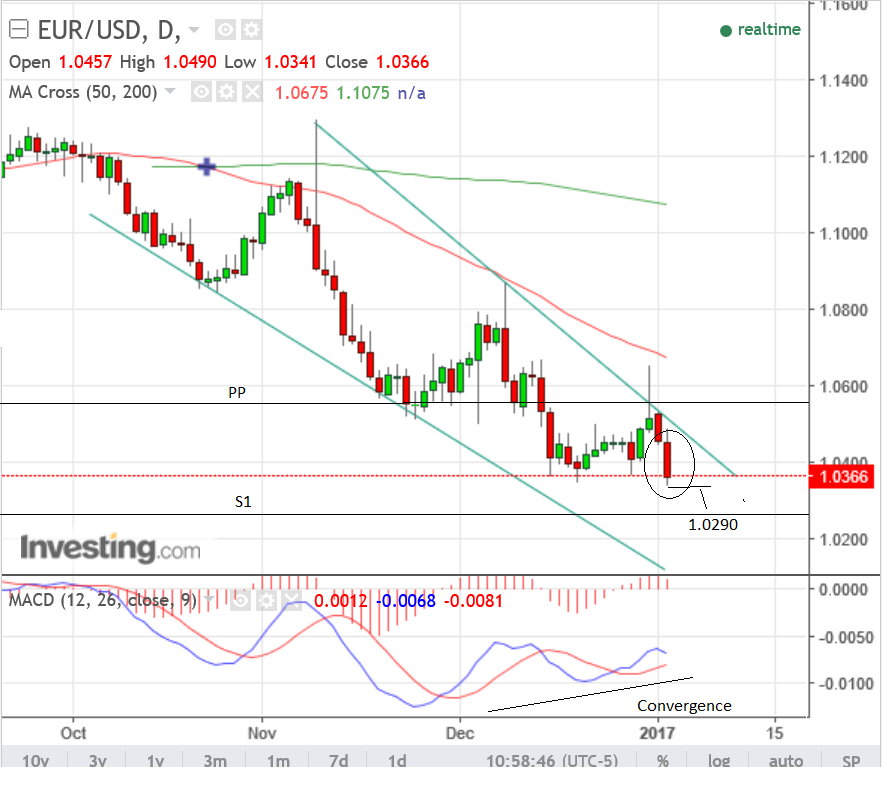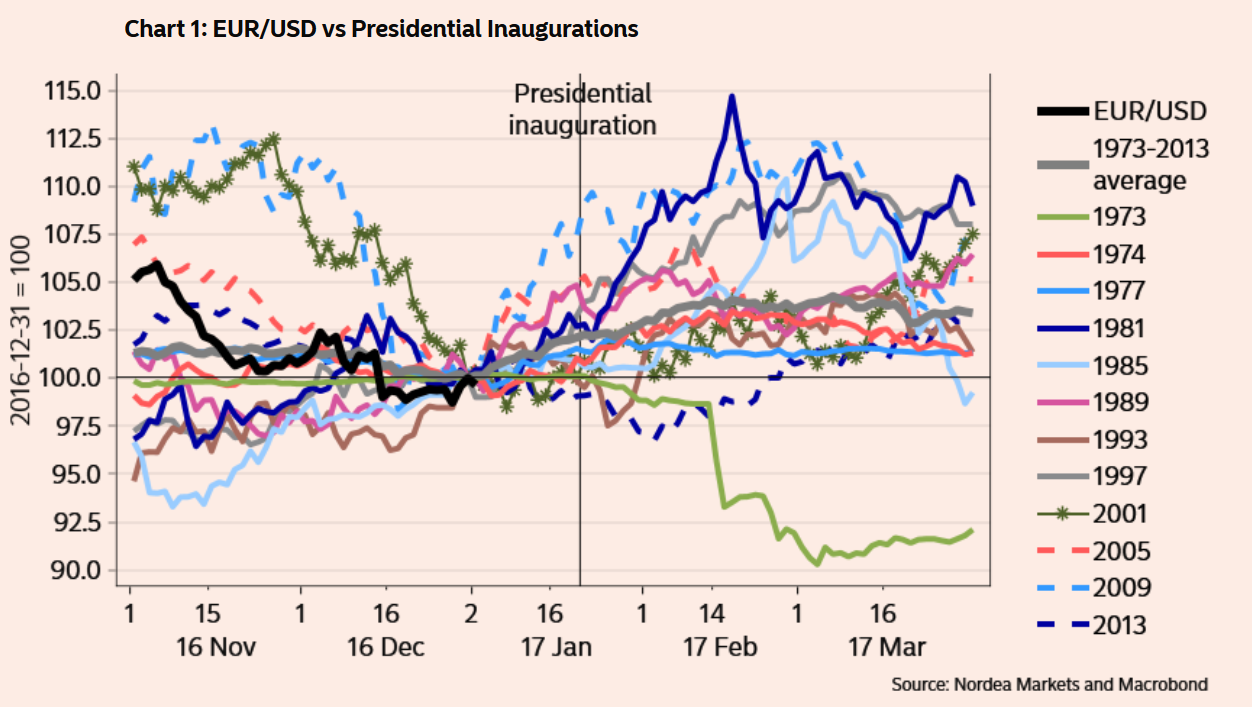Outlook for the EUR/USD Exchange Rate: USD Weakness Ahead, but EUR/USD Parity still Highly Likely

The Euro remains under notable pressure against a rampant US Dollar as we move through the opening throes of what promises to be a volatile year for foreign exchange markets.
The Dollar's long-term trend of appreciation is alive and well with markets continuing to bet on a higher interest rate environment that will likely characterise the Trump era.
The immediate concern for traders was however a particularly strong US ISM Manufacturing data release on Tuesday 3 which has been instrumental in pushing the EUR/USD exchange rate lower.
EUR/USD has now fallen to the previous 1.0350 14-year lows before delving even deeper to 1.0341.
We at Pound Sterling Live see weakness extending in an initial move to 1.0290 where tough support is situated from the S1 monthly pivot.
The lack of correspondence, or 'convergence', from the MACD momentum indicator, which is not making new lows like the exchange rate, also introduces some doubt as to the how much lower the pair has to go.
Overall, we see a break below the new 1.0341 level reaching 1.0290 but beyond that it is in the lap of the gods.
 Indeed, the 1.0 exchange rate is being increasingly projected by those technical analysts who are taking a medium-term view.
Indeed, the 1.0 exchange rate is being increasingly projected by those technical analysts who are taking a medium-term view.
"There is a strong tendency for this market to post either its highest or lowest price of the year in January. Given that this is a key market and is largely impacted by the dollar, this will be an interesting pattern to monitor this month to see if it plays out. If it turns out that January is the high of the year in EUR/USD, we can expect this pair to go well below par before 2017 is up," says Phil Seaton at LS Trader, a retail currency trading advisory service.
Other techies are in agreement.
“The closing level of $1.0385 reached on December 20th represented a 14- year low and although it has subsequently recovered somewhat the consensus view in the market is that parity will be achieved before this move is over – and the chart supports that view,” says technical analyst Bill McNamara of broker Charles Stanley McNamara in a note seen by Pound Sterling Live.
AFEX: Dollar Exhaustion on the Horizon
Although still bearish in the short-term, foreign exchange broker AFEX’s sees a strong possibility of a change of trend for the Dollar emerging in a few weeks’ time.
“At this juncture, the preferred outcome is still one of a relatively short-lived USD advance followed by reversal at some point in Q1," says AFEX's Market Analyst Lucy Lillicrap.
“Additional evidence would be needed before this exhaustive argument can be confirmed though the outcome would mean, in effect, a beginning of another macro cycle but with Dollar weakness the major driving force - much as was seen in 2001/02 or indeed 1985/86,” says Lillicrap in a note seen by Pound Sterling Live.
AFEX actually see a chance of a major macro US Dollar cycle coming to an end at the start of 2017, which bodes particularly ill for USD.
“From the point of view of historical convention an extension of EUR/USD and GBP/USD weakness much into Q2 this year would actually represent a break from longer term norms -whereby 5 or so years of positive U.S. Dollar price action (such as has just been seen from 2011) is followed by a decade or so of bearishness,” says Lillicrap.
Yet - in the immediate future, however, Lillicrap is bearish, seeing a risk of a break down to 1.0150, or possibly even parity.
“Technical studies argue broader negative trends are likely to remain undisturbed,” she remarks of the pair.
Only a move above 1.0875 would change the outlook, however, that seems far off now when a move down towards parity seems more likely.
“Some support has been uncovered at 1.0340/50 but once this gives way 1.0150 and indeed the psychological 1.0000 level appear vulnerable next,” said the AFEX analyst.
High Probability of USD Weakness Due to ‘White House’ Effect
Nordea Bank’s head of FX Martin Enlund has carried out some interesting research which points to a link between presidential inaugurations and the US Dollar.
The inauguration is the actual swearing in ceremony, and on years when this happens, normally on January 20, Enlund has found the Dollar almost always weakens before, during and for a month and a half after the ceremony.
This would seem to back up Lillicrap’s thesis that the Dollar will weaken soon when its macro trend changes.
The chart below shows the remarkable predictability with which the inauguration effect has taken place since 1973.
It is particularly reliable in presaging Dollar weakness in the EUR/USD pair, as shown by the chart below, which shows how all bar one of the 12 inauguration years since 1973 were accompanied by falls in USD.
The exception proves the rule, almost, in that it occurred under the unusual circumstances of the Bretton Woods system being dismantled in 1973, when the supremacy of the gold standard ended and the age of fiat money came into effect






